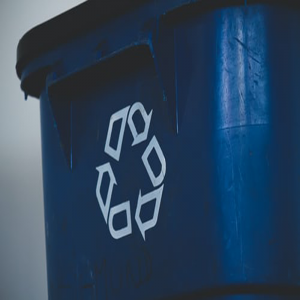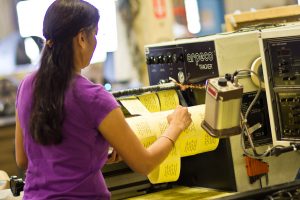How to Recycle Label Release Liner

WHAT IS LABEL RELEASE LINER AND HOW CAN IT BE RECYCLED?
Labels are everywhere and are a critical packaging component to help buyers identify products. When a label is applied to a package, it is released from a liner unless it is a linerless label. The liner has a dual purpose. First, it protects a label during transport. Secondly, it allows a label to be wound onto a roll without sticking to the other labels on the roll or destroying the integrity of the label adhesive. This is because the liner has a layer of silicone that allows the label adhesive to easily peel away from the liner. This layer of silicone on the label liner prevents it from being recyclable through normal channels because it cannot be removed, leaving behind impurities when recycled. As a result, many recycling centers send this liner waste to a landfill.
As a result, many people believe throw away their label release liner. What most people do not know is that there are a variety of options that they can take advantage of to help them dispose of their label release liner without sending the waste to a landfill. There are a few things you have to know first.
 Step 1: Understanding your liner type and volume
Step 1: Understanding your liner type and volume
Here is what you must know before you find a solution to prevent your label liner from ending up in a landfill.
- What type of liner do you use? PET, Paper or Film
- How much volume, width and footage of release liner do you consume weekly, monthly and annually?
- How much does a roll of your waste release liner weigh? How many rolls of waste liner do you have per month?
- Do you have a place to store your liner waste and how much can you store?
Many label manufacturers such as UPM Raflatac and Avery have recycling programs but are designed for high volume users. Knowing the answer to these questions is the first step to finding a solution that will work for your business.
Step 2: Packaging and storing your label liner waste
Paper Liners over 5 inches: Wind the liner waste onto a core and stack on skids
Paper Liners under 5 inches or hard to rewind rolls: Store these release liners in thick gaylord boxes without the core.
Film Liners: Wind the liner waste onto itself (ideally without a core) and store these liners in thick gaylord boxes.
 Other Considerations
Other Considerations
The liner waste must be contaminant free and separated from other waste items. There should also be less than 2% of the actual substrate or label left on the rolls. The biggest challenge to finding an alternative to for your liner waste continues to be volume, distance and your ability to store the label waste on-site.
LINER WASTE TO ALTERNATIVE FUEL
One viable option for processing liner waste is a recycling facility that is setup to process municipal solid waste and convert that material into a safe, alternative fuel source. At Hub Labels, we have partnered with BioHiTech Global in Martinsburg, WV to handle our label waste and in doing so, we were able to become a 100% landfill free facility.
To learn more waste to energy, visit the US Energy Information website.
Liner Collection Services
A number of companies offer programs to collect and reprocess release liners, including:
PET liners – Mitsubishi Polyester Film, Inc and Circular Polymers
Paper and Film liners – Channeled Resources Group and Recycle America
Film liners – National Recycling Network, Custom Polymers and Commercial Plastics
Paper liner in Mid-West – Paper Recovery
Paper and Film liner in California – Allen Company
Reduce, Reuse, Recycle
Thank you to the TLMI for providing information on how to recycle release liner.
